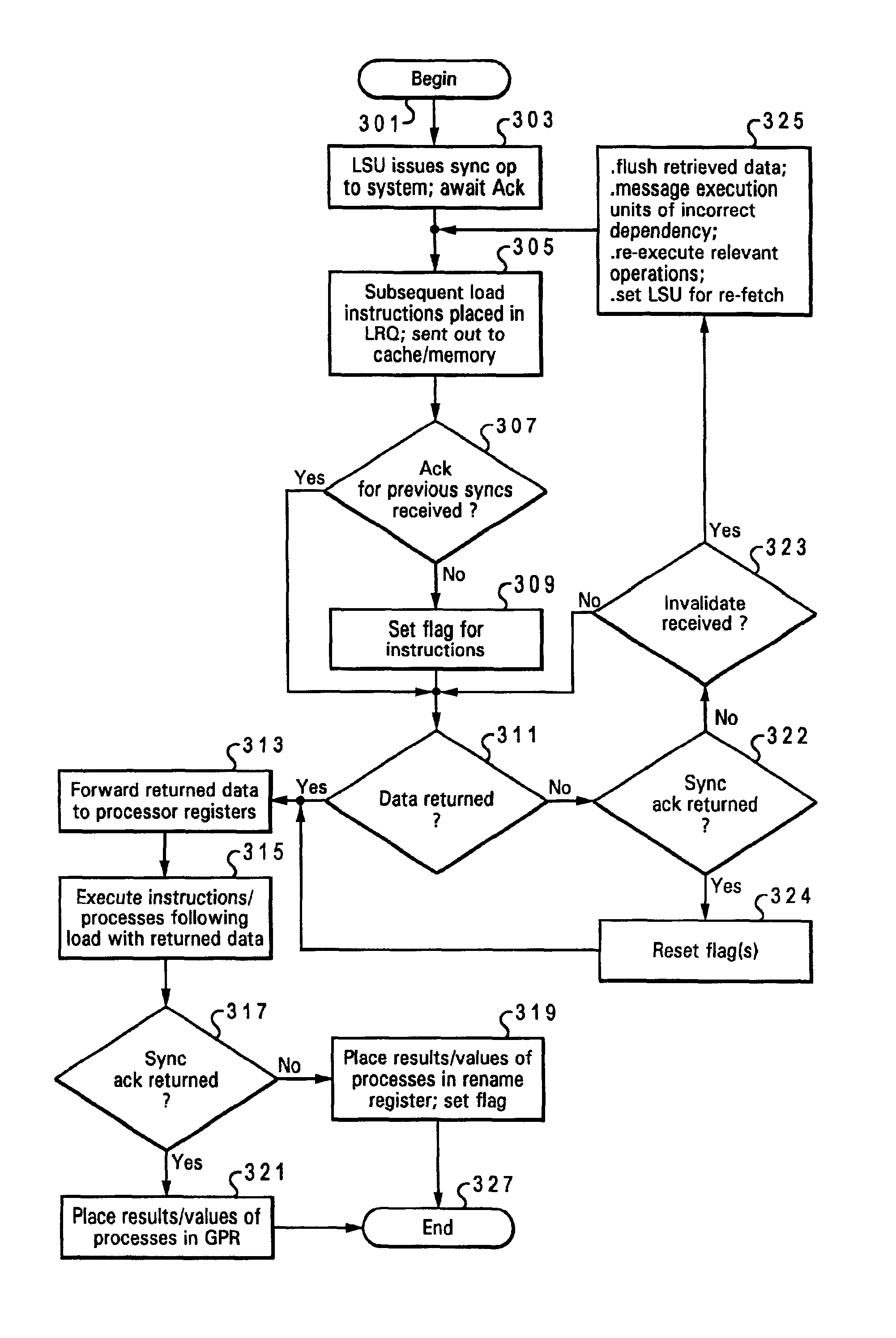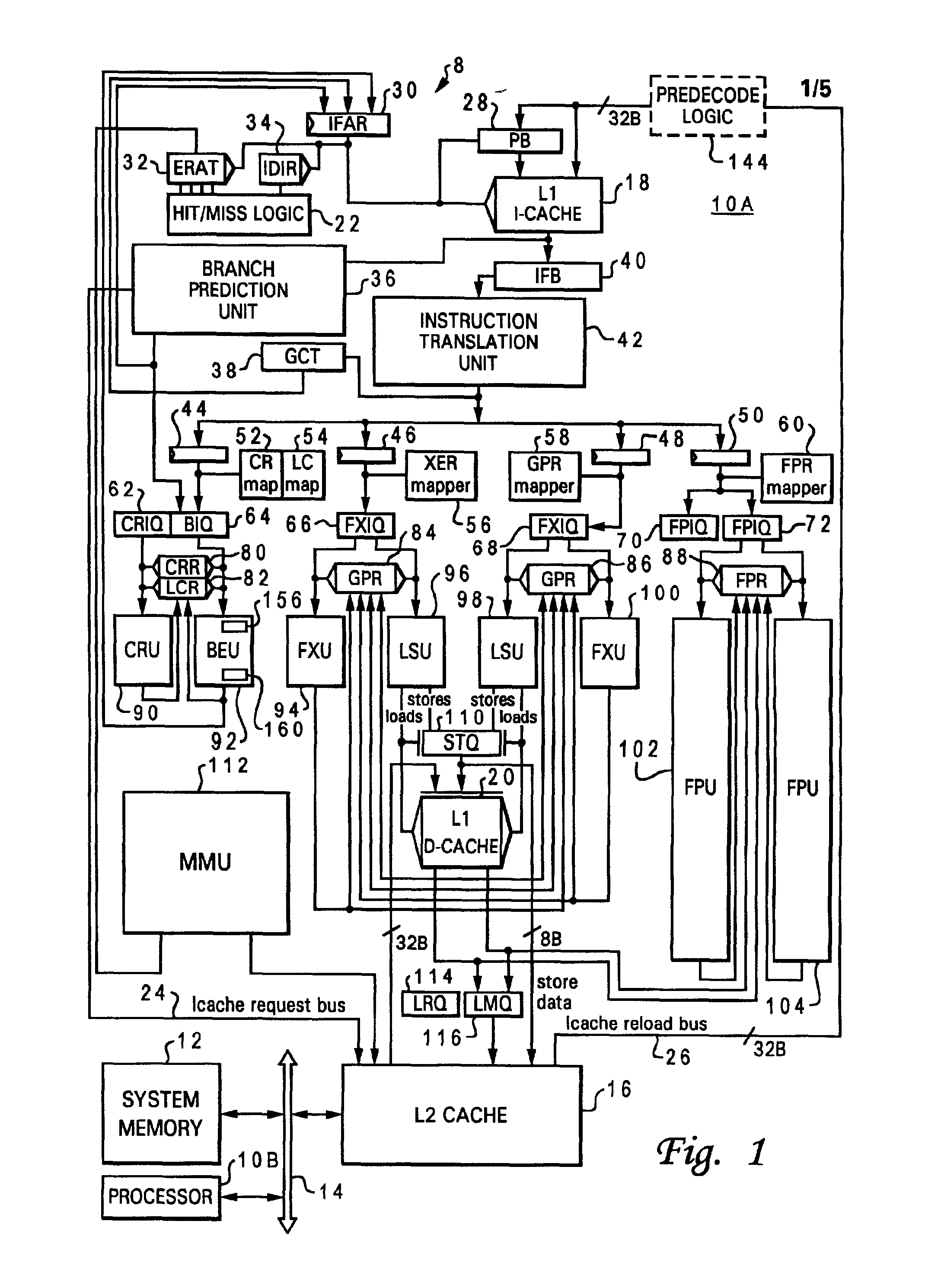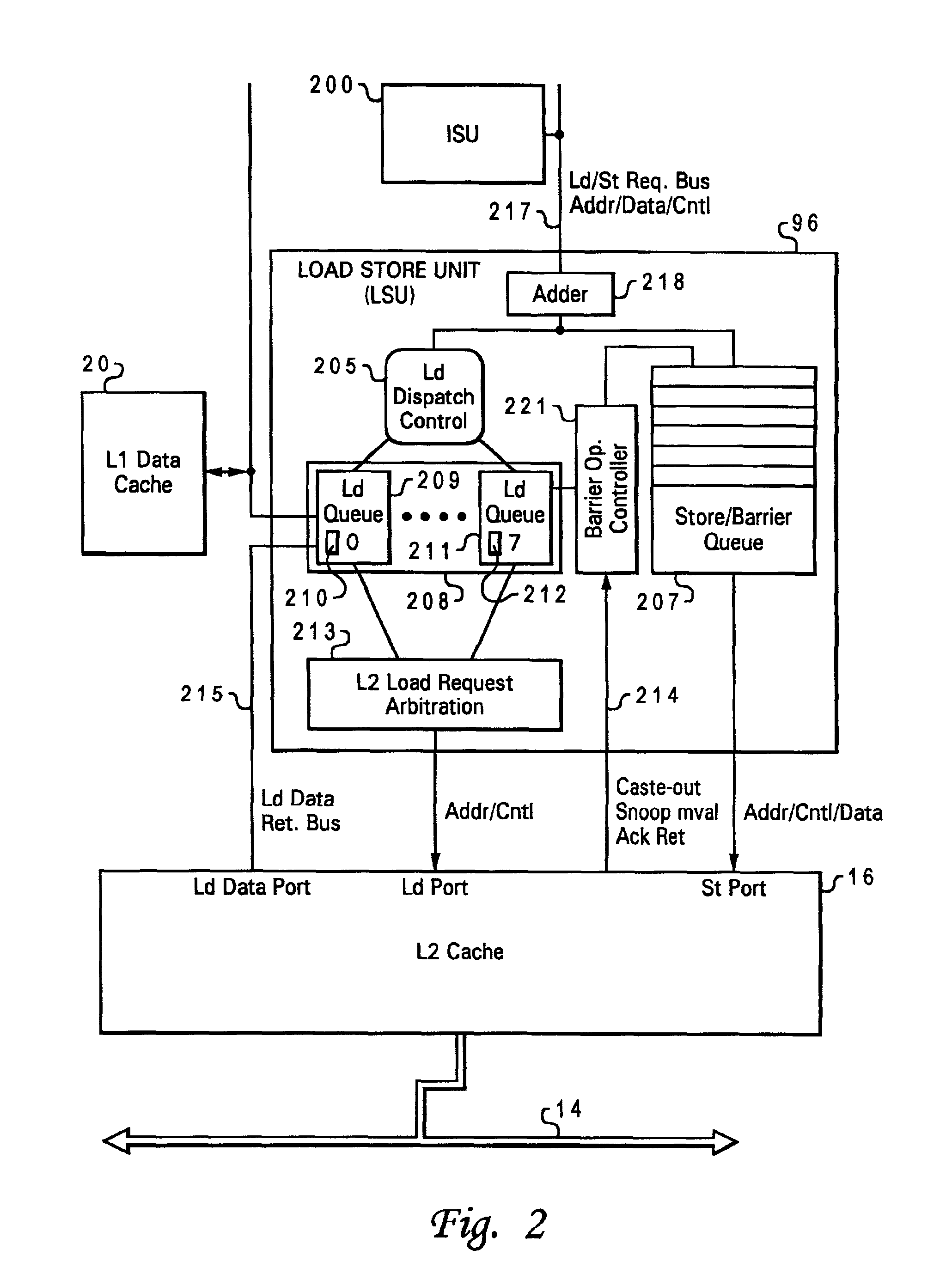Speculative execution of instructions and processes before completion of preceding barrier operations
a technology of instruction and process, applied in the field of instruction processing in multi-processor data processing systems, can solve the problems of sync operations typically degraded processing efficiency by approximately 5 percent, degraded processing efficiency by approximately 10 percent, and weakly consistent processor architectures
- Summary
- Abstract
- Description
- Claims
- Application Information
AI Technical Summary
Benefits of technology
Problems solved by technology
Method used
Image
Examples
Embodiment Construction
With reference now to the figures, and in particular with reference to FIG. 1, there is illustrated a high level block diagram of a processor within a multiprocessor data processing system in accordance with the present invention. As depicted, data processing system 8 includes two processors 10A and 10B (although additional processors are possible). Processors 10A, 10B preferably comprises one of the PowerPC™ line of microprocessors available from International Business Machines Corporation. Processors 10A, 10B are preferably superscalar with full out-of-order execution. Those skilled in the art will appreciate that other suitable processors can be utilized.
As illustrated, data processing system 8 further includes system memory 12, which like processor 10B is interconnected with processor 10A via interconnect (or system bus) 14. Interconnect 14, which can comprise one or more buses or a cross-point switch, serves as a conduit for communication transactions between processors 10A, 10...
PUM
 Login to View More
Login to View More Abstract
Description
Claims
Application Information
 Login to View More
Login to View More - R&D
- Intellectual Property
- Life Sciences
- Materials
- Tech Scout
- Unparalleled Data Quality
- Higher Quality Content
- 60% Fewer Hallucinations
Browse by: Latest US Patents, China's latest patents, Technical Efficacy Thesaurus, Application Domain, Technology Topic, Popular Technical Reports.
© 2025 PatSnap. All rights reserved.Legal|Privacy policy|Modern Slavery Act Transparency Statement|Sitemap|About US| Contact US: help@patsnap.com



